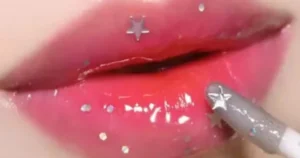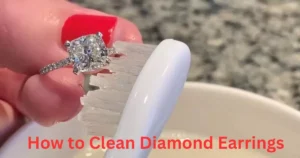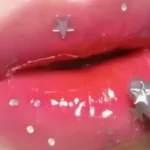Getting a new piercing is an exciting experience, but it’s crucial to follow proper aftercare instructions to ensure a smooth healing process. One common question that arises is when it’s safe to switch from the initial starter earrings to small hoop earrings.
In this blog post, we’ll explore the ins and outs of wearing hoop earrings after a new piercing, covering everything from benefits and material considerations to styling tips and misconceptions.
Benefits of Hoop Earrings for First Piercings
While studs are typically recommended for initial piercings, small hoop earrings can offer several advantages once the healing process is complete:
- Versatility: Hoop earrings can be dressed up or down, making them a versatile choice for various occasions.
- Comfort: Well-fitted hoops can be comfortable to wear for extended periods.
- Style: Hoops come in various sizes, materials, and designs, allowing you to express your personal style.
Choosing the Right Size and Material
When selecting small hoop earrings for a newly healed piercing, consider the following factors:
- Size: Start with small, lightweight hoops (around 8-10mm in diameter) to avoid excessive pulling or stretching.
- Material: Opt for hypoallergenic materials like implant-grade titanium, 14k or higher gold, or surgical steel to minimize the risk of irritation or infection.
- Finish: Choose earrings with a smooth, polished finish to prevent snagging or catching on clothing or hair.
Proper Care and Maintenance for Hoop Earrings
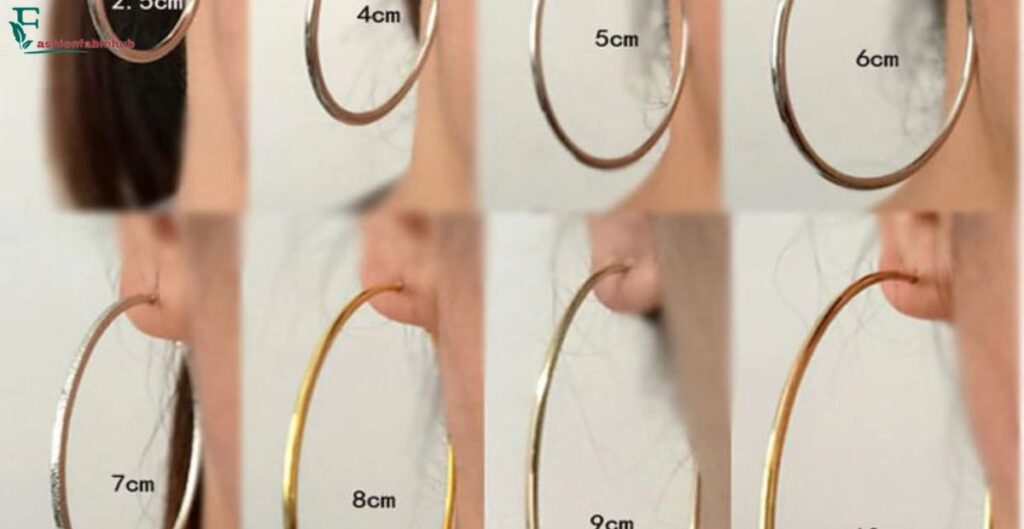
Even after the initial healing period, it’s essential to maintain proper hygiene and care for your piercing:
- Cleaning: Gently clean your piercings with a saline solution or antimicrobial soap.
- Rotation: Periodically rotate your hoops to prevent embedding in the piercing channel.
- Removal: Remove your hoops before sleeping, exercising, or engaging in activities that may cause snagging or trauma.
Styling Tips for Hoop Earrings
Small hoop earrings offer versatility and can be styled in various ways:
- Stacking: Layer multiple small hoops in the same piercing for a trendy, curated look.
- Mixing Metals: Experiment with mixing different metal tones for a unique, eclectic vibe.
- Embellishments: Opt for hoops with gemstones, charms, or intricate designs for a touch of glamour.
Common Misconceptions About Hoop Earrings
Despite their popularity, there are a few misconceptions surrounding hoop earrings that need to be addressed:
- Myth: Hoops are appropriate for initial piercings. Reality: Studs or labrets are recommended for new piercings to minimize movement and trauma during the healing process.
- Myth: Hoops are less likely to catch or snag. Reality: While hoops may seem safer, they can still get caught on clothing, hair, or other objects, potentially causing injury or trauma to the piercing.
- Myth: Hoop size doesn’t matter. Reality: Choosing the appropriate hoop size is crucial to prevent excessive pulling or stretching of the piercing channel.
How long to wait before changing earrings after piercing?
The recommended waiting time before changing earrings after a new piercing varies depending on the location and individual healing process. Here are some general guidelines:
- Earlobe piercings: 6-8 weeks
- Cartilage piercings (helix, tragus, etc.): 3-6 months
- Nose piercings: 2-4 months
- Lip piercings: 2-3 months
It’s essential to wait until the piercing is fully healed before attempting to change the jewelry. Changing earrings too soon can lead to complications, such as irritation, infection, or even the piercing closing up.
Factors that affect the healing time of a new piercing
Several factors can influence the healing time of a new piercing, including:
- Piercing location: Different areas of the body heal at different rates. Cartilage piercings, for instance, tend to take longer to heal than earlobe piercings.
- Aftercare: Proper aftercare, such as cleaning the piercing regularly and avoiding touching or playing with it, can significantly impact the healing process.
- Individual factors: Everyone’s body heals at a different pace, and factors like age, overall health, and immune system strength can affect healing times.
- Jewelry material: Using high-quality, hypoallergenic jewelry can minimize the risk of irritation and prolong the healing process.
The best types of earrings to wear during the healing process
During the healing period, it’s crucial to wear appropriate jewelry to support the healing process and minimize complications. Here are some recommended types of earrings:
- Surgical steel labrets or studs: These are the most common types of starter jewelry for new piercings. They are relatively inert and less likely to cause irritation or allergic reactions.
- Implant-grade titanium: Titanium is a hypoallergenic, biocompatible metal that is well-suited for piercings, especially for those with metal sensitivities.
- 14k or higher gold: High-quality gold is another good option for those without metal allergies, as it is less likely to cause reactions.
It’s generally recommended to avoid earrings made from materials like nickel, which can cause allergic reactions and prolong the healing process.
How to take care of your new piercing
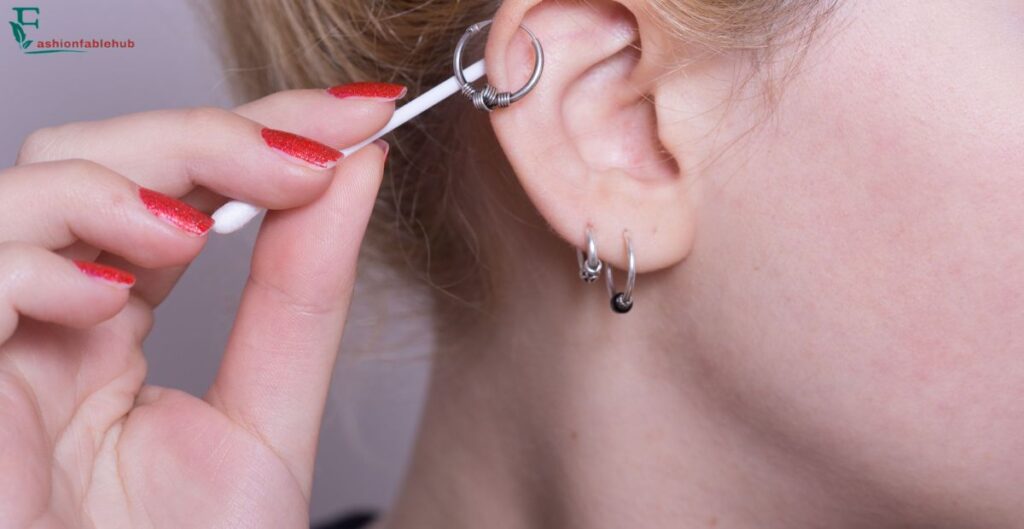
Proper aftercare is essential for ensuring a smooth healing process and preventing complications. Here are some tips for taking care of your new piercing:
- Clean the piercing regularly: Use a saline solution or a piercing aftercare solution to gently clean the piercing and remove any crusting or discharge.
- Avoid touching or playing with the piercing: Touching the piercing with unclean hands can introduce bacteria and delay healing.
- Protect the piercing: Avoid situations where the piercing may get snagged or pulled, such as sleeping on it or engaging in contact sports.
- Avoid submerging the piercing: Avoid soaking the piercing in bodies of water (e.g., pools, hot tubs, lakes) until it is fully healed, as this can introduce bacteria and increase the risk of infection.
Signs of infection to watch out for piercing
While some redness, swelling, and discomfort are normal during the initial healing stages, it’s important to be aware of signs that may indicate an infection. These include:
- Excessive swelling or redness: Some swelling is expected, but if it becomes severe or spreads significantly, it could be a sign of infection.
- Persistent bleeding: Slight bleeding is normal initially, but if it continues for an extended period, it may be cause for concern.
- Thick, discolored discharge: A small amount of clear or pale yellow discharge is normal, but thick, discolored (green or yellow) discharge can indicate an infection.
- Severe pain or tenderness: While some discomfort is expected, severe or worsening pain can be a sign of infection.
- Fever or chills: These can be signs of a more serious systemic infection.
If you experience any of these symptoms, it’s important to seek medical attention promptly to prevent further complications.
When to seek medical attention for your piercing
In most cases, minor issues with a new piercing can be managed at home with proper aftercare. However, there are instances when it’s necessary to seek medical attention:
- Persistent or worsening symptoms: If symptoms like swelling, redness, discharge, or pain persist or worsen despite proper aftercare, it’s best to consult a healthcare professional.
- Suspected allergic reaction: If you experience symptoms like severe swelling, rash, or difficulty breathing after getting a new piercing, seek medical attention immediately, as it could be a sign of an allergic reaction.
- Embedded jewelry: If the jewelry becomes embedded in the piercing, do not attempt to remove it yourself, as this can cause further trauma. Seek professional assistance.
- Tearing or migration: If the piercing begins to tear or migrate away from its original location, it’s important to have it assessed by a professional to prevent further complications.
It’s always better to err on the side of caution when it comes to addressing potential issues with a new piercing.
Can you change earrings earlier than the recommended waiting time?
While it’s generally not recommended to change earrings before the piercing has fully healed, there may be exceptions in certain circumstances. For example, if the starter jewelry is causing significant irritation or an allergic reaction, it may be necessary to change it out for hypoallergenic material like implant-grade titanium or 14k gold. However, this should only be done under the guidance of a professional piercer or healthcare provider.
It’s important to note that changing earrings too soon can disrupt the healing process, introduce bacteria, and increase the risk of complications like infection, migration, or even rejection of the piercing. If you absolutely must change your earrings before the recommended waiting time, it’s crucial to take extra precautions:
- Consult a professional: Seek advice from a reputable piercer or healthcare provider to ensure it’s safe and necessary to change your earrings early.
- Use proper technique: Follow proper sterilization and insertion techniques to minimize the risk of introducing bacteria or causing trauma to the piercing site.
- Choose appropriate jewelry: Use high-quality, hypoallergenic materials like implant-grade titanium or 14k gold to minimize the risk of irritation or allergic reactions.
- Observe for signs of complications: Closely monitor the piercing for any signs of infection, excessive swelling, or other issues, and seek medical attention if necessary.
In general, it’s advisable to exercise patience and follow the recommended waiting times to ensure a safe and successful healing process.
What happens if you change earrings too soon?
Changing earrings before the piercing has fully healed can lead to several potential complications, including:
- Infection: Introducing new jewelry or bacteria into an unhealed piercing can increase the risk of infection, which can cause swelling, redness, discharge, and prolonged healing times.
- Prolonged healing: Disrupting the healing process by changing earrings too soon can significantly delay the overall healing time, as the piercing may need to start the healing process over again.
- Migration or rejection: Trauma caused by changing earrings prematurely can cause the piercing to migrate or even reject entirely, resulting in scarring or the need to re-pierce the area.
- Excessive scarring: Changing earrings too soon can lead to increased scarring or thickening of the piercing channel, which can affect the overall appearance and potentially cause discomfort or complications down the line.
- Allergic reactions: Introducing new materials before the piercing has fully healed can increase the risk of allergic reactions or sensitivities, causing further irritation and delaying the healing process.
It’s important to exercise patience and follow the recommended waiting times to minimize the risk of these complications and ensure a successful, problem-free healing process.
How to change earrings safely after piercing
Once your piercing has fully healed, changing your earrings can be a fun way to switch up your look or try new styles. However, it’s important to follow proper precautions to ensure a smooth transition:
- Proper preparation: Before handling your piercing, thoroughly wash your hands with antimicrobial soap and warm water. Clean the piercing area with a saline solution or piercing aftercare product.
- Sterilization: Ensure any new jewelry you plan to insert is properly sterilized. You can purchase a sterile saline solution or use an autoclave sterilizer.
- Gentle technique: When removing the old jewelry, try to minimize trauma to the piercing site by gently twisting and pulling the earring straight out. Avoid tugging or forcing it if it seems stuck.
- Lubrication: Apply a small amount of lubricant (saline solution or sterile lubricating gel) to the new jewelry to aid in smooth insertion.
- Insertion: Carefully insert the new jewelry following the same path as the previous earring. Avoid forcing it or twisting excessively.
- Aftercare: Clean the piercing area with a saline solution or antimicrobial soap and monitor for any signs of irritation or infection.
If you encounter any difficulty or experience excessive discomfort during the process, it’s best to seek assistance from a professional piercer or healthcare provider.
Conclusion
Deciding when to transition from the starter earrings to stylish small hoop earrings after a new piercing requires patience and careful consideration. While the wait can be frustrating, allowing the piercing to fully heal before changing jewelry is crucial to preventing complications like infections, migration, or rejection.
By following the recommended timelines, choosing appropriate jewelry materials, and practicing proper aftercare, you can safely enjoy the versatility and flair of small hoop earrings. Remember, taking the time to let your piercing heal properly will ensure a lifetime of happy styling and beautiful accessorizing.

As a seasoned fashion enthusiast with over 6 years of hands-on experience, I’m dedicated to sharing my expertise and passion for all things hair and earrings.

